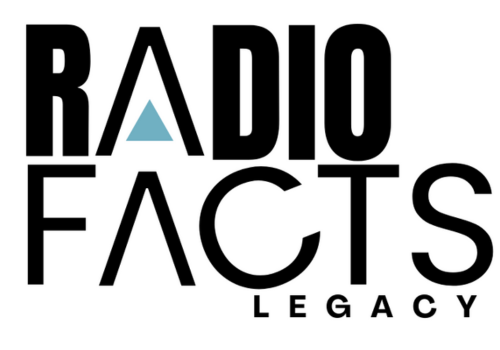Have you ever wondered what it takes to create your own music? To bring your ideas to life and produce professional-sounding tracks? If so, you’re about to embark on an exciting audio journey. Whether you’re a complete beginner or have some experience, understanding the basics of music production is essential for unleashing your creativity and reaching your full potential as a musician.
From setting up your equipment to learning the ins and outs of recording, mixing, and mastering, this article will guide you through the fundamental aspects of music production, providing you with valuable tips and insights to kickstart your journey.
Key Takeaways:
- Learning music production requires dedication and focus, but the rewards are immeasurable.
- There are four phases in your music production journey: Discovery and Initial Curiosity, Skill Building and Playing, Doing and Exploring, and Song Writing and Album Production.
- Don’t be afraid to experiment and find joy in the process of making music.
- Having the right music production equipment, such as a digital audio workstation (DAW) and a MIDI keyboard, is crucial.
- Stay curious and continuously learn and evolve your music production skills.
What Does it Mean to Produce Music?
Music production encompasses a range of activities involved in creating a recorded piece of music. It combines various tasks such as writing music, recording and editing, and mixing and mastering to bring a musical idea to life. Whether you’re an aspiring artist, a seasoned musician, or simply curious about the music production process, understanding the fundamentals is essential.
There are different roles within the realm of music production, with each requiring a unique set of skills. On the technical side, producers use music production software and equipment to write and record music in a digital audio workstation (DAW). They manipulate sounds, apply effects, and edit recordings to achieve the desired sonic quality.
“Music production is like painting with sound. It’s about bringing together different elements and crafting a sonic landscape that evokes emotion and captivates the listener.”
Aside from the technical aspects, music producers also play a strategic role in the creative process. They work closely with artists, composers, and musicians to shape their vision and bring it to fruition. This involves collaborating with performers, arranging compositions, and providing guidance and direction.
Understanding Music Production Techniques
Music production techniques are the tools and methods used to create, manipulate, and enhance sounds. These techniques form the foundation of a music producer’s toolkit and are crucial for achieving professional-quality recordings. Some common techniques include:
- Recording and capturing high-quality audio
- Editing and arranging recorded tracks
- Applying effects and processing sounds
- Mixing multiple tracks together
- Mastering the final mix for distribution
By mastering these techniques, music producers can achieve their desired sound, create a cohesive composition, and deliver a polid final product.
Essential Music Production Software and Equipment
Music production software and equipment play a vital role in the music production process. Here are some essential tools that every music producer should have:
| Music Production Software | Music Production Equipment |
|---|---|
|
|
These software applications and physical equipment enable music producers to compose, record, and manipulate sounds with precision and creativity.
By understanding music production techniques, utilizing the right software, and using appropriate equipment, you’ll be well-equipped to embark on your music production journey. In the following section, we’ll explore how to become a music producer and further develop your skills and expertise.
How to Become a Music Producer
Becoming a music producer requires dedication, hard work, and honing your skills every day. While obtaining a degree in music production can be helpful, it’s not necessary for success. Many music producers start their careers as side projects while working other jobs. To start your music production journey, it’s important to train your ears, learn an instrument, and practice writing music. It’s also crucial to have the right music equipment, such as a digital audio workstation (DAW) and a MIDI keyboard.
Training your ears is an essential skill for any music producer. This involves developing a keen sense of pitch and rhythm, as well as being able to identify different elements in a song, such as individual instruments and effects. You can improve your ear training by regularly listening to a wide variety of music and critically analyzing the different sounds and techniques used.
Learning an instrument is another essential aspect of becoming a music producer. Whether it’s the piano, guitar, drums, or any other instrument, having a solid foundation in playing an instrument will greatly enhance your ability to create and arrange music. Understanding the mechanics of how instruments work and how they fit together in a composition will give you a deeper understanding of music production.
Writing music is a skill that can be developed through practice. Start by experimenting with different chord progressions, melodies, and rhythms. Don’t be afraid to push boundaries and think outside the box. The more you practice, the better you’ll become at crafting unique and engaging musical ideas.
Having the right music equipment is essential for producing high-quality music. Invest in a reliable digital audio workstation (DAW) that suits your needs and preferences. Some popular examples include Ableton Live, Logic Pro, and FL Studio. Additionally, a MIDI keyboard will allow you to lay down melodies, chords, and rhythms in a more intuitive and expressive way. Familiarize yourself with the features and capabilities of your chosen DAW and MIDI keyboard.
Remember, becoming a music producer is a journey that requires continuous learning and improvement. Embrace the process, be patient with yourself, and don’t be afraid to experiment and take risks. With dedication and passion, you can develop your skills and create music that resonates with others.
Now that you have a solid foundation in music production, let’s move on to the next section, where we’ll explore the process of setting up for recording and expressing yourself through your music.
Set up for Recording and Express Yourself
When it comes to music production, setting up your recording studio is crucial. Whether you prefer working with live instruments or software instruments within your digital audio workstation (DAW), having the right setup is essential for capturing the sounds you envision. Let’s explore the necessary equipment and techniques to help you express yourself through your music.
Recording with Live Instruments
If you’re a fan of the organic sound of live instruments, you’ll need a few key pieces of equipment to get started:
- Audio Interface: An audio interface acts as the bridge between your instruments or microphones and your computer. It allows you to capture high-quality audio recordings.
- Microphones: Depending on the instruments you plan to record, you’ll need suitable microphones to capture the unique characteristics of each instrument.
- Cables and Stands: Ensure you have the necessary cables and microphone stands to connect your instruments and position the microphones correctly.
- Acoustically Treated Space: Creating a space with good acoustics can make a significant difference in the quality of your recordings. Consider using soundproofing materials, diffusers, and absorbers to control the sound reflections in your room.
Working with Software Instruments
For those who prefer the convenience and versatility of software instruments, MIDI controllers are a popular choice. These controllers allow you to trigger virtual instruments within your DAW and record MIDI patterns. Here’s what you need:
- MIDI Controller: A MIDI controller can be a keyboard, pad controller, or electronic drum kit that sends MIDI data to your computer. It’s a versatile tool for playing and recording software instruments.
- Virtual Instruments: Explore the vast world of virtual instruments available in your DAW or as standalone plugins. These software-based instruments capture the sounds of various instruments, giving you endless creative possibilities.
“The right equipment allows you to capture your unique musical ideas and bring them to life.”
Shaping Your Sound with Audio Effects
Once you’ve captured your recordings, it’s time to shape and manipulate them to create the desired sonic atmosphere. Adding audio effects can enhance the sound and bring your music to the next level. Here are some common audio effects used in music production:
- Equalization (EQ): EQ allows you to adjust the frequency balance of your recordings, enhancing certain frequencies or reducing unwanted ones.
- Compression: Compression evens out the dynamic range of your recordings by reducing the volume of louder parts and boosting quieter sections.
- Reverb: Reverb creates a sense of space and adds depth to your recordings. Experiment with different reverb types and settings to find the perfect ambiance for your tracks.
- Delay: Delay can add rhythmic patterns and echoes to your recordings, creating a sense of movement and space.
- Modulation Effects: Effects like chorus, phaser, and flanger can add movement and character to your recordings, making them sound more vibrant and interesting.
Remember, the key to effective music production is experimentation. Don’t be afraid to try different techniques and explore new sounds. Let your creativity guide you as you set up your recording space and express yourself through your music.
Mix and Master Your Track, Take it Further
Once you have recorded your track, it’s time to bring it to the next level. Mixing and mastering are crucial steps in the music production process that can greatly enhance the quality and impact of your music.
Mixing involves the art of balancing the individual elements of your track, such as vocals, instruments, and effects, to create a cohesive and harmonious sound. By adjusting levels, applying equalization, compression, and other audio effects, you can make each element shine while maintaining a pleasing overall balance. Effective mixing can breathe life into your music and bring out its full potential.
Mastering, on the other hand, focuses on the final polish of the track. It ensures that the overall sound is consistent, optimized for different playback systems, and ready for distribution. Mastering involves applying final touches such as dynamic range control, stereo enhancement, and overall tonal balance adjustments. The goal is to make your track sound professional and competitive in the music industry.
If you’re new to mixing and mastering or want to sharpen your skills, consider enrolling in music production courses. These courses provide comprehensive knowledge and hands-on practice in various techniques and tools used in the mixing and mastering process. You’ll learn about advanced audio processing, mastering techniques, and how to achieve a polid and professional sound. By investing in your education, you can take your music production skills to new heights and gain a competitive edge in today’s music industry.
FAQ
What are some music production basics I should know as a beginner?
Some music production basics include learning an instrument, training your ears, and practicing writing music. It’s also important to have the right equipment, such as a digital audio workstation (DAW) and a MIDI keyboard.
What does it mean to produce music?
Music production involves creating a piece of recorded music. This can include tasks such as writing music, recording and editing, and mixing and mastering. Music producers are responsible for creating the sonic landscape of a song and should have a deep understanding of the recording process and industry trends.
How can I become a music producer?
To become a music producer, it’s important to dedicate time and effort to honing your skills. While a degree in music production can be helpful, it’s not necessary for success. Start by training your ears, learning an instrument, and practicing writing music. You can also explore online tutorials and courses to further develop your skills.
What equipment do I need for music production?
Some essential equipment for music production includes a digital audio workstation (DAW), a MIDI keyboard, and an audio interface for connecting instruments or microphones to your computer. These tools will allow you to record and manipulate sounds to create your music.
How do I set up for recording and express myself?
To set up for recording, you can either work with live, external instruments or use software instruments within your DAW. For live sounds, you’ll need an audio interface to connect your instruments or microphones to your computer. MIDI controllers are also useful for working with software instruments. Additionally, you can add audio effects to shape and manipulate your recorded audio to enhance the sound to your liking.
How do I mix and master my track?
Mixing involves balancing the individual elements of a track, adjusting levels, and applying effects to achieve a cohesive sound. Mastering focuses on the final polish, ensuring the track is ready for release and sounds good across different playback systems. There are resources available, including online courses, to learn more about these processes and continue improving your music production skills.
Source Links
- http://www.markwk.com/music-production-learning-journey.html
- https://www.soundtrap.com/content/blog/how-to-produce-music
- https://blog.native-instruments.com/how-to-produce-music/










